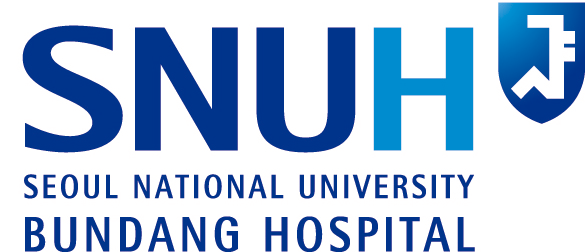Vibrotherapy of the neck region for hemispatial neglect, in post-stroke patients: a randomised controlled trial
Hemispatial neglect, resulting from stroke, manifests as a reduced response to stimuli on the side opposite the brain injury, despite the absence of motor or sensory impairment. Patients with this syndrome experience difficulty in performing everyday activities, such as eating from one side of the plate or dressing from one side. It is a common symptom of damage to the right cerebral hemisphere, responsible for spatial concentration, occurring in 85% of stroke patients in this part of the brain. Neglect can result from both local damage and dysfunction of the brain’s neural network, especially in the chronic phase.
Despite active rehabilitation, approximately one third of patients with inattentive side syndrome maintain symptoms in a chronic phase. Due to limited awareness, some patients do not actively participate in rehabilitation, which affects treatment outcomes. Patients with chronic stroke and inattentional bias syndrome may return to daily life with delayed and reduced quality of life. The Functional Independence Scale (FIM) and Modified Barthel Index (MBI) are significantly low in patients with bias inattention syndrome, due to comorbid symptoms that affect balance, visual perception and hygiene. Therefore, rehabilitation of bias inattention syndrome becomes essential.
The key assumptions and conclusions of the study are:
- The intervention programme lasted 50 minutes per day, five times a week, for 4 weeks.
- The effects of each intervention were assessed using the Albert test and the Catherine Berge Scale in the context of unilateral neglect, while the modified Barthel Index was used to assess the impact on daily activities.
- All three groups, i.e. combined therapy as well as separately applied prismatic adaptation and vibrotherapy, showed a reduction in stroke symptoms and improvement in daily activities after the intervention (p < 0.05)..
- The neck vibrotherapy group showed a significantly greater reduction in bias inattention compared to the other groups (p < 0.05).
- The study suggests that a novel vibration therapy intervention is recommended in a clinical rehabilitation setting for patients with chronic stroke and inattentional bias syndrome.
Based on:

Choi HS, Lee BM. A Complex Intervention Integrating Prism Adaptation and Neck Vibration for Unilateral
Neglect in Patients of Chronic Stroke: A Randomised Controlled Trial. Int J Environ Res Public Health. 2022 Oct 18;19(20):13479. doi: 10.3390/ijerph192013479. PMID: 36294062; PMCID: PMC9603544
Population studied
A total of 41 post-stroke participants took part in the study. After screening according to the inclusion and exclusion criteria, 36 participants were randomly allocated to three groups. Inclusion criteria were a confirmed diagnosis of stroke based on magnetic resonance imaging (MRI) findings, the presence of stroke and the absence of other diseases, a score on the Korean Version of the Mini-Mental Status Examination (K-MMSE) ≥ 20, indicating the absence of cognitive, auditory or visual impairment, and the ability to follow instructions.
The bias inattention syndrome was assessed using the Motor-Free Visual Perception Test (MVPT).
All tests and interventions were conducted by occupational therapists with at least 3 years of experience, who were trained in the intervention methods by the principal investigator.
Research procedure
The study included 41 participants, 36 of whom met the inclusion criteria. Patients were randomly allocated to three groups: A (PA + NV), B (NV), C (PA) [PA – prismatic adaptation; NV – neck vibrotherapy]. Before the intervention, tests for inattention of the side were performed, confirming the homogeneity of the group. Treatments lasted 4 weeks, 5 times a week for 50 minutes each. All groups received 30 minutes of conventional occupational therapy. The results confirmed that all groups experienced a reduction in side neglect and improvement in daily activities. Group A showed a significantly greater reduction in symptoms of bias inattention syndrome than the other groups, suggesting that the innovative combination therapy of prismatic adaptation and vibration therapy may be effective in the rehabilitation of patients with chronic stroke and bias neglect.
The use of vibrotherapy in research
The study used neck vibration, applying local neck vibration therapy to the extensor neck muscles on the side affected by the stroke. This method aimed to improve neck muscle function and was adapted from previous studies, making it an effective form of rehabilitation therapy in the context of chronic stroke.
Results of the study
This study confirmed the effectiveness of a complex programme of prismatic adaptation and neck vibration therapy in the treatment of bias inattention syndrome in post-stroke patients. A comparison before and after the intervention showed positive effects in all three groups, both in terms of reduction of bias inattention and improvement in daily activities. The results showed synergistic effects of the combined intervention of prismatic adaptation and vibrotherapy, surpassing the effects of both techniques used separately.
Commentary
In post-stroke patients, the bias inattention syndrome impairs quality of life and hinders the performance of daily activities. This study aimed to investigate the effects of a complex rehabilitation programme combining prismatic adaptation (PA) and neck vibration therapy (NV) in the treatment of stroke symptoms. The results of the study, assessed using the Albert test, the Catherine Berge Scale and the modified Barthel Index, showed that all three groups experienced symptom reduction and improved quality of life after the treatments. The vibration therapy and adaptation group showed a significantly greater reduction in neglect than the other groups.
This innovative approach, combining vibrotherapy and adaptation, is recommended for the rehabilitation of post-stroke and side neglect patients. It offers great hope for improving the quality of life and independence of these patients especially as this therapy can be carried out at home.
Read more in:
See also:


